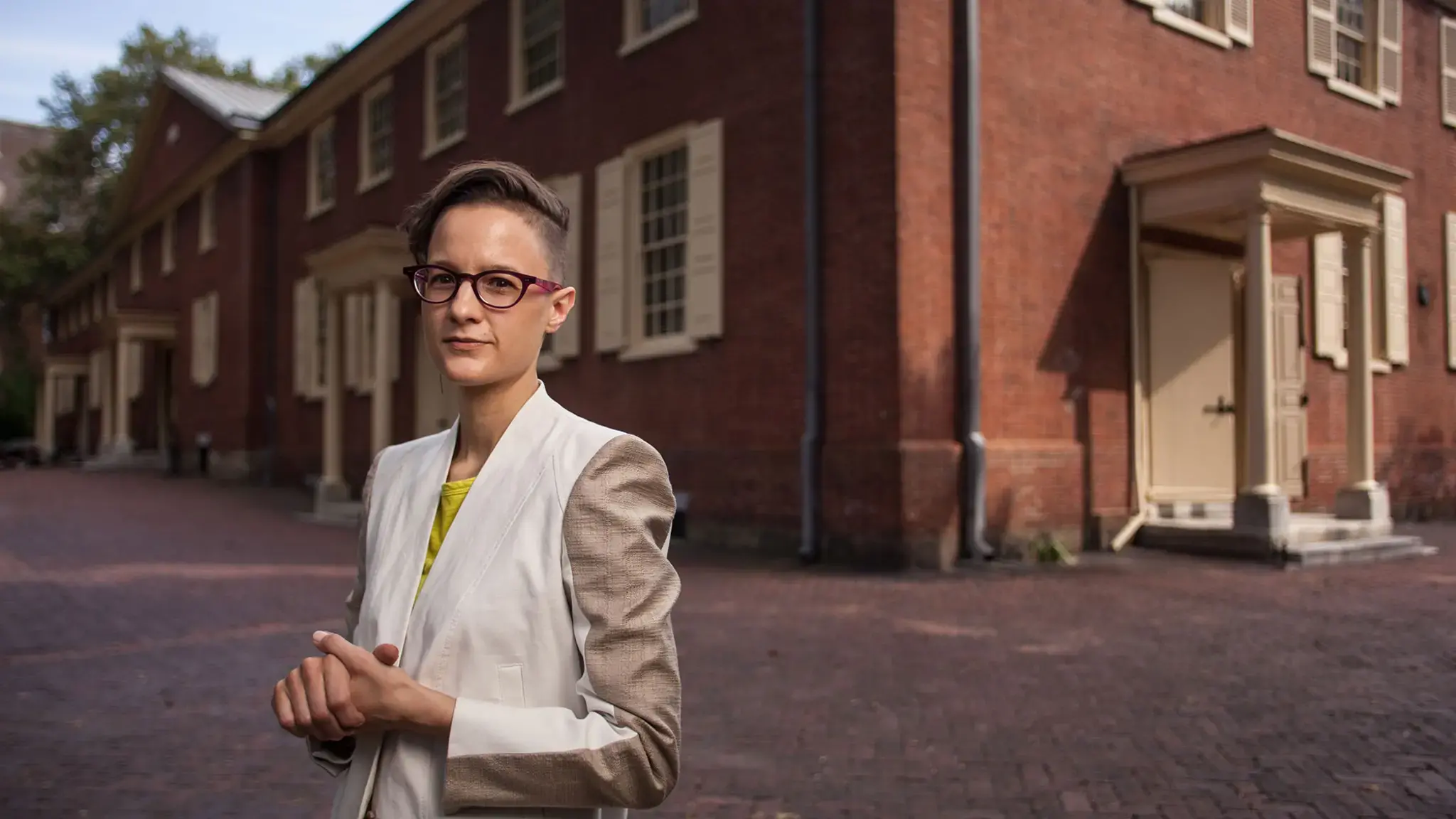

As part of our new “Fellows Friday” web feature, we focus on the artistic lives of our Pew Fellows: their aspirations, influences, and creative challenges. This week, we speak to 2013 Pew Fellow J. Louise Makary, whose works on film combine dance, still photography, and experimental techniques, introducing unexpected, challenging elements into traditional narrative structure.
What music are you listening to? Which books are on your bedside table?
I listen to a lot of dance music that won’t be around for very long. Because it’s always the same but always different, it reconciles two different, paradoxical drives—stimulated by the newness, comforted by the predictability. Los Angeles DJ Anna Lunoe is life support.
I’m reading Tao Lin’s Taipei but I keep losing my place. I’m looking at a book of photography by Yuki Onodera, which includes the series “Portrait of Second-hand Clothes,” and the catalog for Michael Snow: Photo-Centric, a really exceptional exhibition at the Philadelphia Museum of Art that I was lucky to be involved with.
What do you daydream about when you are working?
I daydream about taking my laptop to a sunlit table where there is light breakfast and a smart choreographer to talk to, or where I get to sit in a studio and watch dancers make things. I’m really daydreaming about being a consultant who helps dance makers negotiate the mechanics of film as they bring their own work to the screen. I also listen to music and let cinematic images work their way through the sound. In my daydreams, I say yes to spectacle, yes to eccentricity, yes to transformations. I’d say yes to trash imagery if I knew what it was.
How does residing in this region contribute to your artistic practice?
Before I was invited to collaborate with Landmarks Philadelphia, which runs four historical house museums, I’d never considered making films that deal with colonial history. My long-term relationship with that organization led to a change in my process, moving toward intensive research and engagement with a field outside of film and fine art. I’m not certain that I will continue to make films about public history, but the experience taught me how to engage more deeply with content, starting with ideas that are geographically close to home.
What could you imagine doing if you didn’t do what you do?
Perfumer.